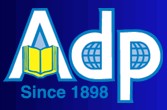
I’ve just returned from the Association of Directory Publishers midyear meeting in Orlando, Florida, where roughly 150 operators and vendors gathered to network and share best practices in a challenging time for independent publishers.
One publisher I spoke with said he was in a meeting at the conference with a dozen or so operators, and the question was asked, how many of you are growing this year. He said about five hands went up. The fact that there were five suggests things are better for independents than incumbents, but a few years earlier, most if not all would have raised their hands.
Here are some highlights, general themes and takeaways from the conference.
Consolidation at the top end of the independent market has made the association membership more dependent on very small publishers than ever before. This point was driven home by Association CEO Larry Angove and Chairman Jim Hail in their remarks. According to data shared by Hail, roughly 75 percent of the membership has revenues of US$3.5 million or less, with a full 42 percent having revenues of US$1 million or less.
As this shift has occurred, the ADP finds it necessary to reassure its smaller company members that it is focused on their needs, rather than bigger players like Yellowbook and Valley Yellow Pages.
Opt-out is a growing concern for the ADP membership. Hail implored publishers to take it seriously. “This will not go away, and you cannot just pay lip service to it.”
The event focused primarily on sharing best practices — in sales, operations, new media and so on.
Tom Dowdle of Summit Publications offered the audience a dose of stern advice. As a former turnaround consultant who became a publisher, Dowdle ran through a laundry list of sound business advise (don’t extend books, take care with receivables, don’t keep deadwood on the payroll, etc.).
His take on the current environment was Darwinian, and probably accurate. The downturn has cleansed the market of inefficient operators whose mistakes were easily overlooked in good times but proved fatal in a down economy. This has created opportunities for more skilled business people to expand or enter the field.
“You just don’t want to be one of the ones who gets cleansed,” Dowdle said.
The final day featured a “best practices brunch” where members submitted questions and other members offered their take. The topics ranged from managing payroll to new media bundling strategies. Interestingly, one question asked for the best approach to pay per call advertising. A show of hands revealed that none of the publishers in the room were using PPC in any context, which stands in sharp contrast to the incumbent publishers, nearly all of which are at least testing pay per call.
One of the most compelling presentations at the conference was made by Steve Sitton of Golden State Directories. He argued, in essence, that independent publishers’ best opportunity is to double down on print and steal share from incumbents that are reeling from the economy, rather than try to attract online revenue. His key supporting point was that among consumers, Google has dominant first choice share over IYPs in where consumers go online to find a local business.
He contends that in one of the key markets he operates in in Northern California, his incumbent competitors have shed US$60 million over the past three years. This “waterfall of pages and money coming out of the utility books” is the real opportunity, according to Sitton.
It’s an intriguing point. It does, however, overlook ways to generate online revenue other than competing directly with Google, including SEM/SEO and online video to name a few.

This Post Has 0 Comments